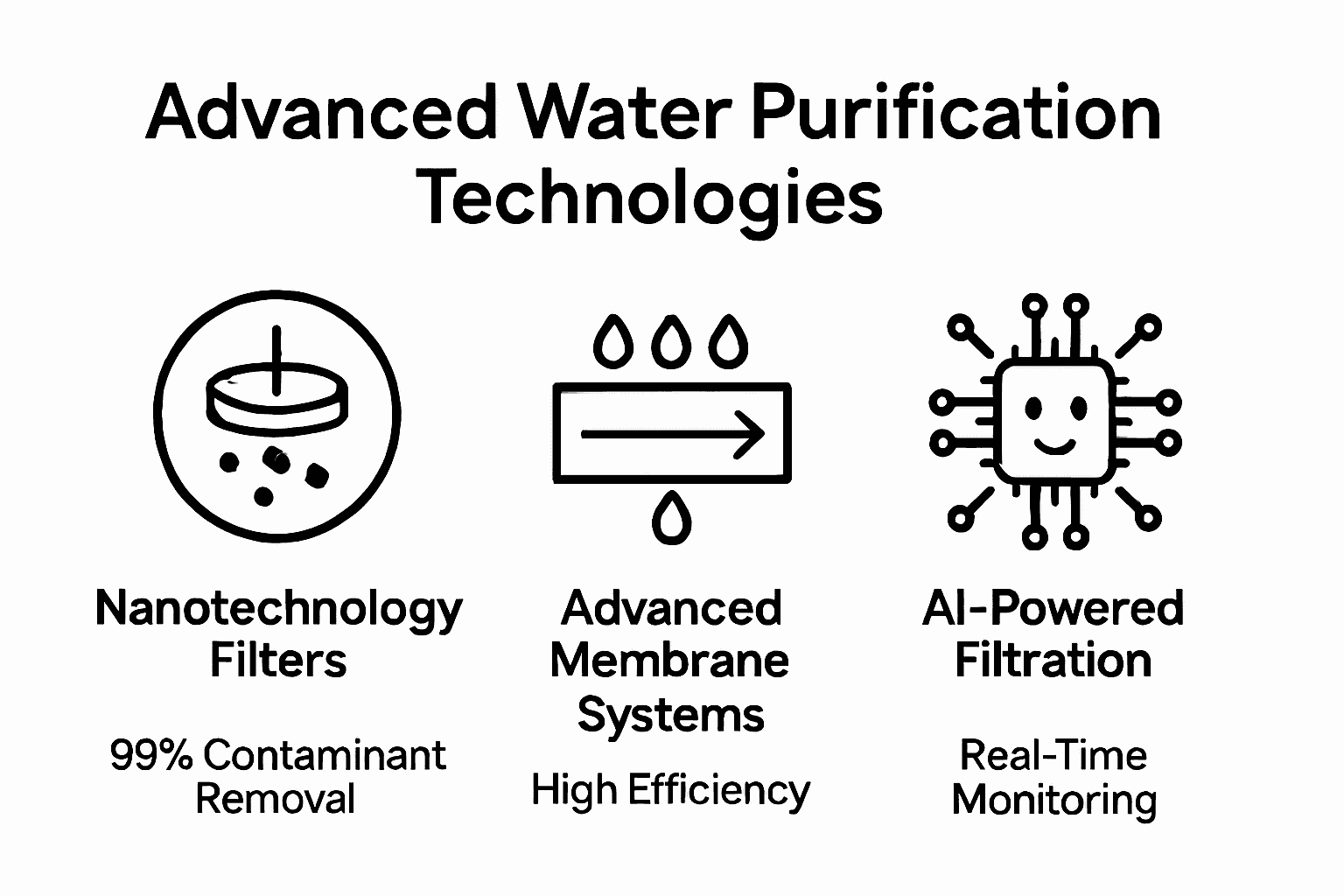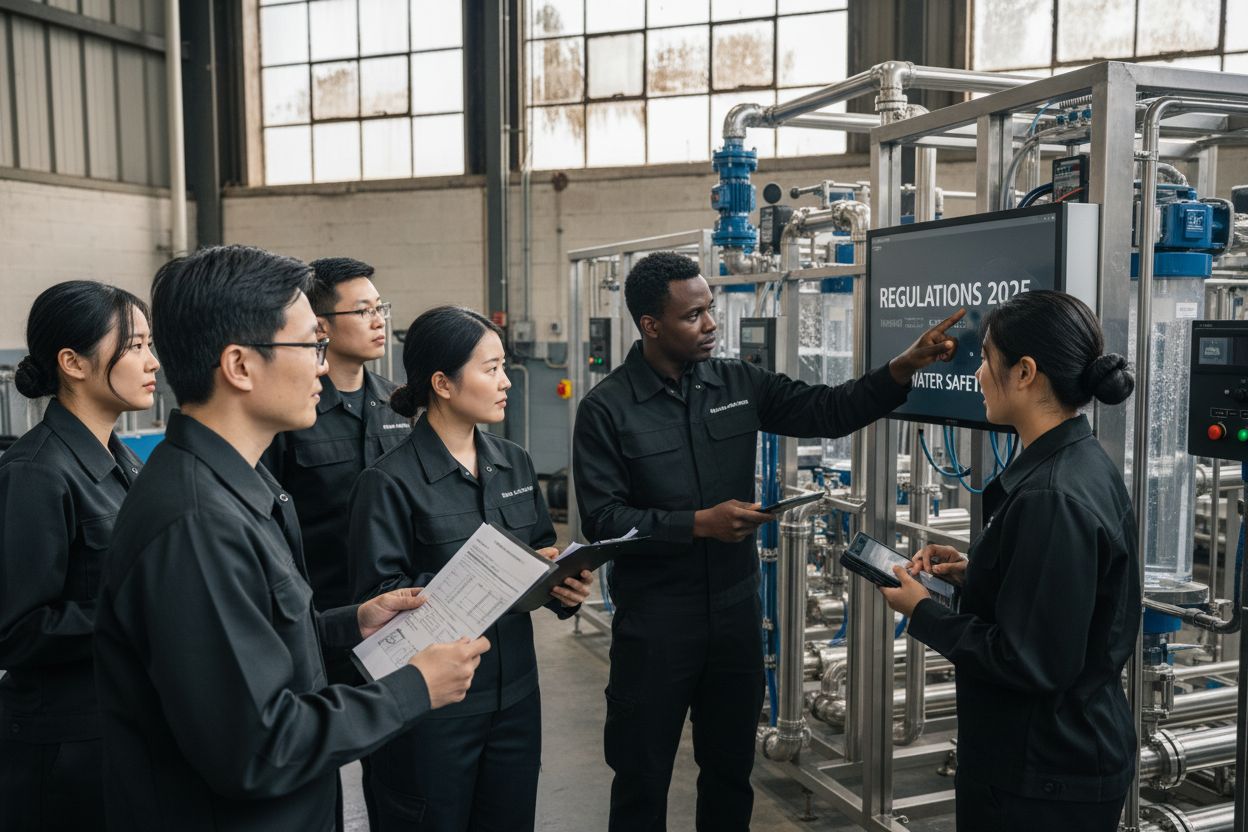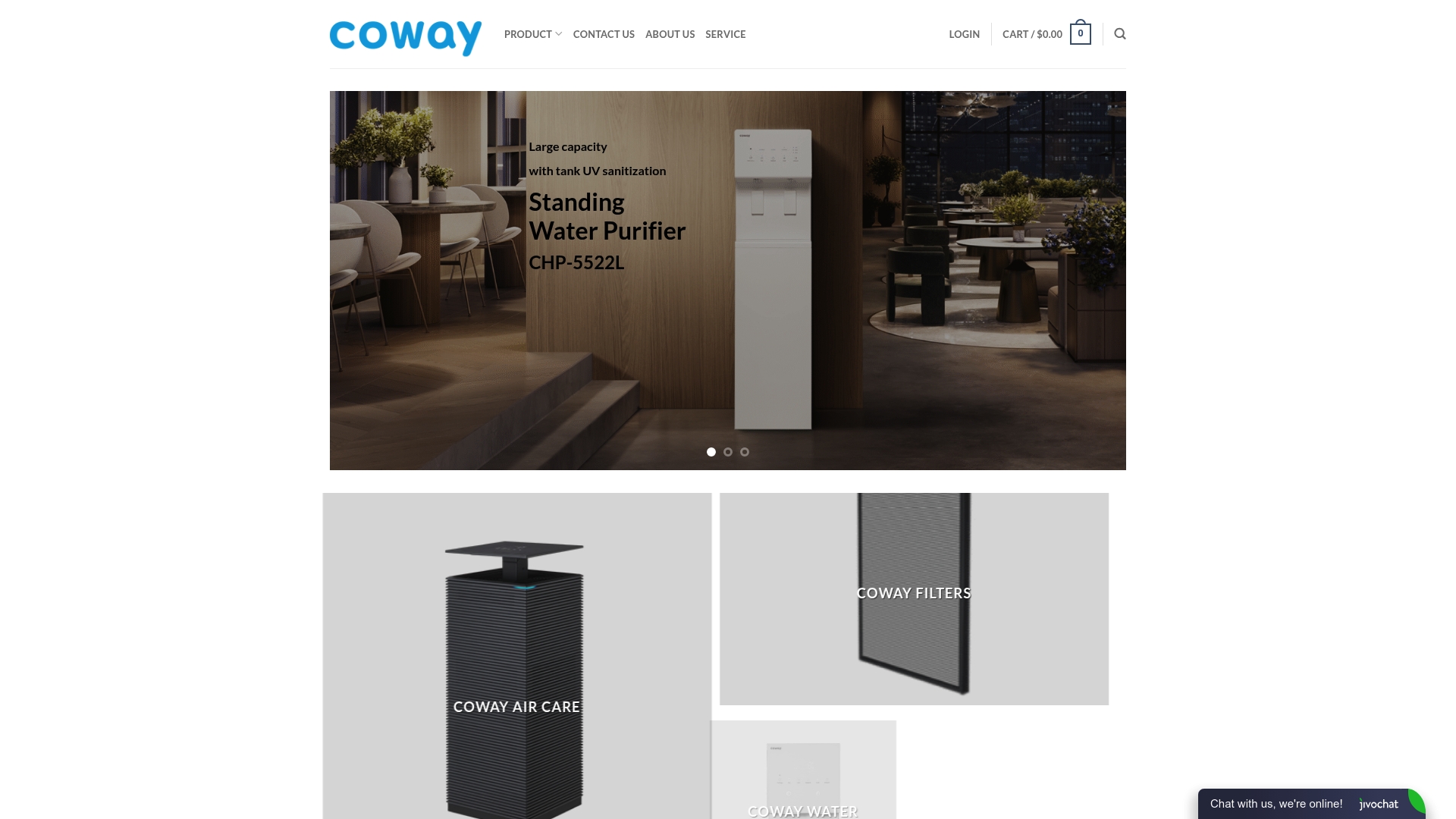Uncategorized
Understanding Water Purification Trends in 2025
Clean water sounds like a basic guarantee in modern life and yet over 2 billion people worldwide still lack safe drinking water according to the World Health Organization. You might think new filters and tech are solving the problem for everyone. The real surprise is how rapidly contamination threats and shifting regulations are forcing us to rethink what ‘safe’ really means every day.
Table of Contents
- The Importance Of Water Purification Today
- Emerging Technologies In Water Purification
- How Changing Regulations Influence Water Practices
- Consumer Preferences Shaping Water Purification Trends
- The Future Of Water Purification: Predictions For 2025
Quick Summary
| Takeaway | Explanation |
|---|---|
| Water purification is essential for public health. | Ensuring safe drinking water prevents health risks from contaminants like pathogens and heavy metals. |
| Advanced technologies improve filtration efficiency. | Nanotechnology and new membranes allow for precise removal of harmful substances, enhancing water quality and safety. |
| Regulations are evolving to ensure safer water systems. | Changing guidelines require utilities to adopt advanced filtration methods to address emerging contaminants effectively. |
| Consumer demand drives innovation in water purification. | Increased awareness prompts manufacturers to create systems that meet high transparency, energy efficiency, and health standards. |
| Future systems will focus on sustainability and local solutions. | Intelligent, decentralized water purification technologies aim to optimize resources, reduce waste, and enhance resilience against quality issues. |
The Importance of Water Purification Today
Water purification represents a critical process in maintaining public health and ensuring safe drinking water for communities worldwide. As global water quality challenges continue to emerge, understanding the fundamental importance of water purification becomes increasingly essential.
Understanding Water Quality Risks
Modern water sources face numerous contamination threats that can compromise human health. Learn more about water purification fundamentals reveals that contaminants can include biological, chemical, and physical pollutants. These risks range from microscopic bacteria and viruses to industrial chemicals and heavy metals that traditional water systems might not effectively filter.
Key water contamination risks include:
- Microbial pathogens like E. coli and Cryptosporidium
- Industrial chemical residues
- Agricultural runoff containing pesticides
- Heavy metals such as lead and mercury
- Pharmaceutical compound traces
Health Implications of Water Contamination
According to World Health Organization research, contaminated water can lead to severe health consequences. Waterborne diseases continue to affect millions globally, causing significant medical challenges. Vulnerable populations like children and elderly individuals are particularly susceptible to water-related illnesses.
Water purification serves as a critical defense mechanism, removing harmful substances and protecting public health. Advanced filtration technologies now enable comprehensive removal of contaminants, providing safer drinking water solutions for households and communities.
The evolution of water purification techniques represents a testament to human innovation in addressing fundamental environmental health challenges. By understanding and implementing robust water treatment strategies, we can significantly reduce health risks and improve overall community well-being.
This table summarizes primary water contamination risks discussed in the article, along with identified sources and associated health implications for each risk.
| Contamination Risk | Main Source | Health Implications |
|---|---|---|
| Microbial Pathogens | Natural water sources, sewage | Waterborne diseases (e.g., diarrhea, nausea) |
| Industrial Chemical Residues | Factories, industrial runoff | Toxicity, organ damage, long-term illnesses |
| Agricultural Runoff | Farms, fertilizers, pesticides | Hormonal disruption, acute poisoning |
| Heavy Metals | Old piping, industrial waste | Neurological issues, developmental disorders |
| Pharmaceutical Traces | Improper medication disposal | Antibiotic resistance, hormonal effects |
Emerging Technologies in Water Purification
The landscape of water purification is rapidly transforming with groundbreaking technological innovations that promise more efficient, sustainable, and comprehensive water treatment solutions. These emerging technologies are reshaping how we approach water quality and safety.
Nanotechnology in Water Filtration
Explore sustainable water purification methods reveals that nanotechnology represents a revolutionary approach to water purification. Nanomaterials like graphene oxide and carbon nanotubes can filter contaminants at microscopic levels, offering unprecedented precision in removing harmful substances.
Key advantages of nanotechnology in water purification include:
- Exceptional filtration precision
- Ability to remove ultra-small contaminants
- Enhanced surface area for more effective filtration
- Potential for reusable and sustainable filter designs
- Reduced energy consumption compared to traditional methods
Advanced Membrane and Filtration Technologies
According to National Science Foundation research, advanced membrane technologies are emerging as game changers in water purification. These sophisticated membranes utilize intricate molecular structures to separate contaminants with remarkable efficiency, creating new possibilities for water treatment across various sectors.
Modern membrane technologies now incorporate intelligent design principles, enabling selective filtration that can distinguish between different types of molecules. This precision allows for more targeted removal of specific contaminants while preserving essential minerals and maintaining water’s natural composition.

The integration of artificial intelligence and machine learning with water purification technologies further enhances our ability to monitor, predict, and respond to water quality challenges. These smart systems can instantly detect contamination levels, adjust filtration parameters, and provide real-time insights into water treatment processes.
As water scarcity and quality concerns continue to grow globally, these emerging technologies offer hope for more sustainable, efficient, and comprehensive water purification solutions that can address complex environmental challenges.
The following table compares cutting-edge water purification technologies highlighted in the article, focusing on their unique features and advantages for modern water treatment.
| Technology Type | Key Features | Advantages |
|---|---|---|
| Nanotechnology | Uses materials like graphene oxide and carbon nanotubes to filter contaminants at nanometer scale | Ultra-precise filtration, can remove ultra-small contaminants, potential for reusable and sustainable filters, lower energy consumption |
| Advanced Membrane Technologies | Utilizes intelligent membrane design, sometimes integrated with AI and machine learning | Selective filtration, preserves minerals, targeted contaminant removal, enables real-time monitoring and system adaptability |
| Intelligent Water Treatment Systems | Incorporates AI, machine learning, and real-time sensors | Automated contaminant detection, predictive maintenance, adaptive filtration, smart home integration |
| Decentralized Local Systems | Compact and community-based water solutions | Reduces reliance on large infrastructure, increases water system resilience, allows for local resource optimization |
How Changing Regulations Influence Water Practices
Water regulations play a critical role in shaping water treatment practices, technology adoption, and overall public health protection. As environmental challenges and scientific understanding evolve, regulatory frameworks continually adapt to address emerging water quality concerns.
Regulatory Framework Transformation
Explore water purification terms in detail highlights the complex landscape of water quality standards. Government agencies like the Environmental Protection Agency continuously update guidelines to protect public health and respond to new scientific discoveries about water contaminants.
Key regulatory drivers include:
- Emerging contaminant identification
- Technological advancement capabilities
- Public health protection mandates
- Environmental sustainability goals
- Economic feasibility of implementation
Impact on Water Treatment Technologies
According to EPA regulatory updates, changing regulations fundamentally transform water treatment approaches. The Safe Drinking Water Act now requires utilities to implement more sophisticated filtration technologies capable of removing increasingly complex chemical and biological contaminants.
Modern regulatory frameworks demand comprehensive monitoring systems that can detect microscopic pollutants previously unrecognized. This shift pushes water treatment facilities to invest in advanced technologies like nanofiltration, reverse osmosis, and intelligent sensor networks that provide real-time contamination tracking.
The regulatory landscape now emphasizes proactive contamination prevention rather than reactive treatment. Water utilities must develop comprehensive risk assessment protocols, implement stringent testing procedures, and maintain transparent reporting mechanisms. These requirements ensure that water treatment practices continuously evolve to meet the most current scientific understanding of water quality and public health protection.

By establishing progressively stringent standards, regulatory bodies drive innovation in water purification technologies, ultimately creating more robust and resilient water treatment ecosystems that can adapt to emerging environmental challenges.
Consumer Preferences Shaping Water Purification Trends
Consumer demands are increasingly driving innovation in water purification technologies, transforming how manufacturers design and develop water treatment solutions. As awareness about water quality grows, individuals are becoming more discerning about their water consumption and filtration needs.
Transparency and Certification Requirements
Explore top water filtration methods demonstrates the rising consumer expectation for clear, verifiable product performance. Modern consumers seek comprehensive information about water filter capabilities, demanding transparency in filtration effectiveness and detailed contaminant removal specifications.
Key consumer priorities include:
- Comprehensive contaminant removal
- Energy efficient technologies
- Sustainable and environmentally friendly designs
- Cost effective long term solutions
- Aesthetically pleasing home integration
Health and Wellness Driven Choices
According to NSF International research, consumers are increasingly viewing water purification as a critical component of their overall health strategy. This shift has prompted manufacturers to develop more sophisticated filtration systems that not only remove harmful substances but also preserve essential minerals and optimize water quality.
The emerging consumer preference emphasizes holistic wellness, with water purification systems now expected to do more than simply filter. Modern consumers want solutions that enhance water’s nutritional profile, potentially providing additional health benefits beyond basic contaminant removal.
Technological advancements are meeting these sophisticated consumer expectations through intelligent water purification systems that offer real-time quality monitoring, customizable filtration settings, and seamless integration with smart home ecosystems. These innovations reflect a broader trend of consumers seeking personalized, data-driven approaches to water consumption and treatment.
The Future of Water Purification: Predictions for 2025
Water purification technologies are rapidly evolving, driven by environmental challenges, technological innovations, and increasing global water scarcity. The landscape of water treatment is poised for transformative changes that will redefine how we approach water quality and accessibility.
Intelligent Water Treatment Systems
Discover why investing in water purifiers matters reveals the critical role of advanced technologies in future water treatment. Artificial intelligence and machine learning are expected to revolutionize water purification by enabling predictive maintenance, real-time contaminant detection, and adaptive filtration strategies.
Key technological predictions for 2025 include:
- Fully automated water quality monitoring systems
- Self-adjusting filtration mechanisms
- Predictive maintenance algorithms
- Integration with smart home ecosystems
- Personalized water treatment profiles
Sustainability and Resource Optimization
According to United Nations Water Research Division, water purification technologies in 2025 will focus intensely on sustainability and resource conservation. Emerging technologies will prioritize energy efficiency, minimal waste generation, and maximum water recovery rates.
The next generation of water purification systems will likely incorporate advanced materials like graphene and biomimetic membranes that offer unprecedented filtration efficiency. These technologies promise to dramatically reduce water waste, energy consumption, and environmental impact while providing superior water quality.
Moreover, decentralized water treatment solutions are expected to gain significant traction. Compact, intelligent purification systems will enable local communities and individual households to manage their water resources more effectively, reducing dependence on large-scale infrastructure and increasing resilience against water quality disruptions.
Ready for the Future of Water Purification?
You have just learned how emerging trends in water purification for 2025 will reshape the way we protect our families from contaminants. The challenges highlighted in the article — complex pollutants, evolving regulations, and advanced filtration needs — are real concerns for anyone who values safe drinking water at home. If you want to make sure your household keeps pace with the latest in filtration technology, now is the time to take action. Explore expert solutions and insights in our Uncategorized Archives – Coway Water Purifier to see what sets our systems apart.

Coway delivers award-winning water purifiers designed around the very innovations discussed in this article. We blend advanced multi-stage filtration, UV sanitization, and sleek design for pure water at every tap. Don’t let uncertainty about water safety linger. Visit Coway Water Purifier and discover our latest models, all with free delivery, installation, and maintenance. Take control of your water quality today and join the movement toward a healthier, safer home.
Frequently Asked Questions
What are the emerging technologies in water purification for 2025?
Emerging technologies in water purification for 2025 include advanced nanotechnology, intelligent water treatment systems using AI and machine learning, and innovative membrane filtration technologies. These advancements focus on improving filtration efficiency, sustainability, and real-time monitoring.
How do intelligent water treatment systems enhance water purification?
Intelligent water treatment systems enhance water purification by utilizing AI and machine learning to enable real-time contaminant detection, predictive maintenance, and adaptive filtration strategies, ensuring optimal water quality and resource management.
What role does sustainability play in future water purification technologies?
Sustainability in future water purification technologies focuses on energy efficiency, minimizing waste, and maximizing water recovery rates. New materials and decentralized systems aim to reduce environmental impact while providing high-quality water solutions.
How can consumers benefit from the advancements in water purification technologies?
Consumers can benefit from advancements in water purification technologies through improved water quality, real-time monitoring of contaminants, and enhanced filtration systems that preserve essential minerals, contributing to better health and wellness outcomes.
Recommended
- Understanding Sustainable Water Purification Methods – Coway Water Purifier
- Understanding Water Purification Terms Explained Clearly – Coway Water Purifier
- 7 Top Water Filtration Methods You Need to Know – Coway Water Purifier
- 7 Effective Water Purification Methods for Your Home – Coway Water Purifier

